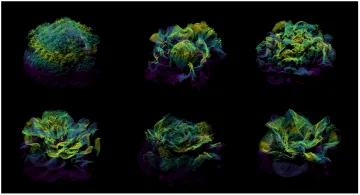
3D, data-rich reproductions of plants help UArizona scientists discover crops’ top performers.
Emmanuel Miguel Gonzalez/School of Plant Sciences
In a state ranked among the nation’s top growers for lettuces, melons and several vegetables, University of Arizona scientists are developing plants adapted to thrive in our rapidly warming world. Among them, Duke Pauli, associate professor in the College of Agriculture, Life and Environmental Sciences, is using AI and the world’s largest agricultural robot to study how crops respond to heat and drought.
As test crops grow, a continuously moving scanner creates high-resolution, 3D images of each plant. Sensors also track information such as chlorophyll properties, a proxy for plant stress levels. The data totals as much as 10 TB a day.
Algorithms process data from each plant in relation to its unique genetic makeup. Analyzing hundreds of thousands of specimens, AI can identify which genes drive desired traits to perform best in various climate conditions.
The Pauli Lab also developed a tool that replicates each crop digitally in virtual reality. Scientists can intuitively access troves of data and explore any plant in 3D over its lifespan and in its original spatial context.
The research is powered by CyVerse, which is housed in U of A's Data Science Institute. This high-performance computing collaboration with the National Science Foundation provides data storage and tools for more than 100,000 researchers around the world.
